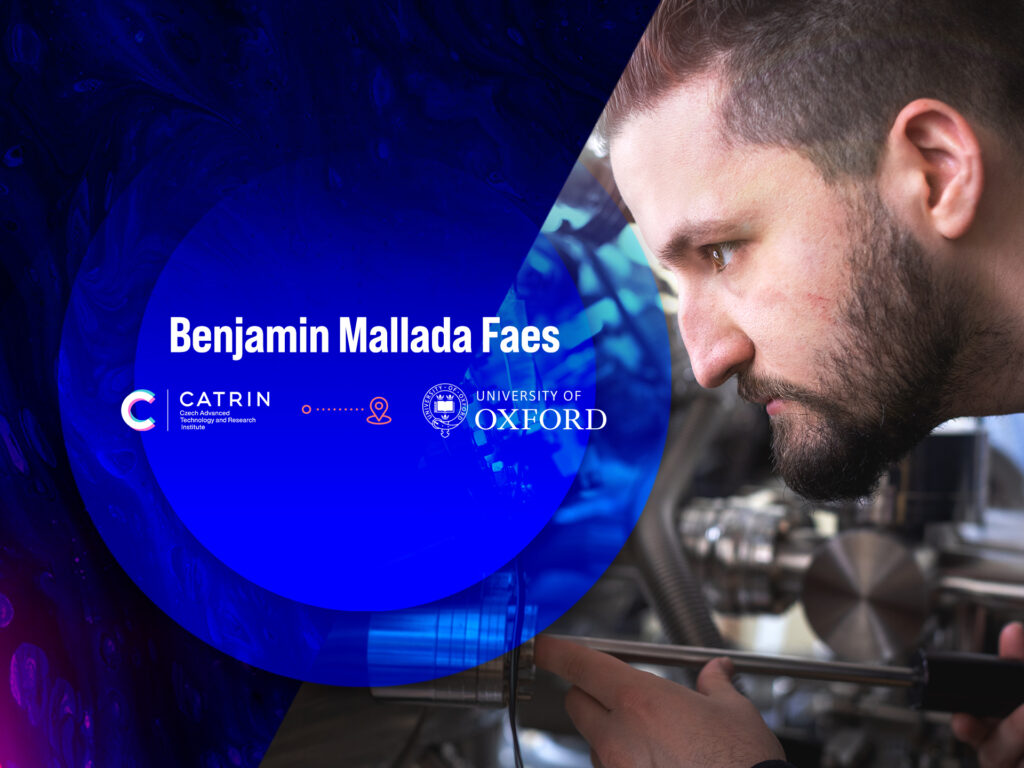Thanks to his successes at CATRIN, the young scientist has been awarded a position at the prestigious University of Oxford
In June, Benjamin Mallada Faes will join the University of Oxford, taking a post-doc position. He worked at the Regional Centre of Advanced Technologies and Materials during his master’s and doctoral studies, and subsequently at CATRIN, and was involved in many scientific breakthroughs. At the prestigious university in the UK, he will be a Postdoctoral Research Associate in Biochemistry and Biophysics.
“I decided to apply for this position because of my previous collaboration with Stephan Rauschenbach’s group, where I undertook a research fellowship in November and December 2021 in the field of electrospray deposition. We have several joint projects aimed at visualizing glycans (carbohydrates) with atomic precision. I was offered to continue this work using a similar scanning probe microscope to the one we have at CATRIN-RCPTM,” said Mallada, who will be at the University of Oxford at the Kavli Institute for Nanoscience Discovery in the Weston Struwe group and will also be working with Stephan Rauschenbach’s team, which is engaged in interdisciplinary research combining physics, chemistry and biochemistry to understand and use nanosystems at the molecular level.

“I will be involved in the development of a state-of-the-art electrospray ion beam deposition device in combination with a recently installed scanning probe microscope. Our goal is the deposition of fragile glycans, proteins and molecules, which are difficult to handle by other methods. There are many mysteries and unknowns in the field of glycan biology, such as how they hydrate and fold and how charges or functional groups are distributed along the molecules. Some fields, such as om-surface synthesis, which are now heavily involved in the development of nanographene devices, could benefit greatly from the use of new precursors that have not yet been deposited in ultra-high vacuum,” explained Mallada Faes.
He has already had great success in measuring the charge distribution of single atoms and molecules with subatomic and submolecular resolution, alongside publications in the most prestigious journals, including Science and Nature Communicastions. He and his colleagues experimentally confirmed the existence of an uneven distribution of electron charge around a halogen atom, the so-called sigma hole. This brought them, among other things, the Werner von Siemens Award for 2021. They also advanced the possibilities of imaging techniques when confirming the existence of the so-called pi-hole.
“I have also been involved in the on-surface synthesis of novel carbon-based compounds, such as polymers with metallic and magnetic properties. I am currently very interested in using a new technique called electrospray ion beam deposition to deposit molecules in an ultra-high vacuum. This method allows us to work with molecules that can only exist in liquid solvents or are too fragile to sublimate from a solid state,” concluded Mallada, who believes he will continue to work with CATRIN.
At CATRIN, it is another success for young scientists who have gained scientific spurs in Olomouc and continue their development at top foreign universities. In the past, fresh doctoral candidates have already gone to the University of Cambridge or the Karolinska Institute.


